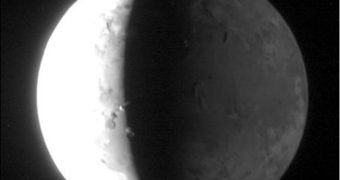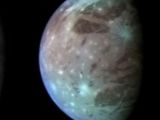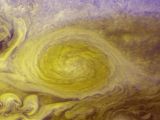NASA's New Horizons space probe is on its way to the last planet (actually the former last planet, as it was "degraded" to the rank of "trans-neptunian object" this year), Pluto. But on its way it took some very beautiful snapshots of Jupiter's system.
In fact, the gas giant is so complex that it looks like having a system of its own. Surrounding the planet is a faint planetary ring system and a powerful magnetosphere. There are also at least 63 moons, including the four large moons called the Galilean moons that were first discovered by Galileo Galilei in 1610. Ganymede, the largest of these moons, has a diameter greater than that of the planet Mercury.
The pictures were taken in February, but they were just beamed back to NASA and are giving astronomers hundreds of pictures of never-before-seen features of the planet, its rings and its moons, making the New Horizon's flyby "successful beyond our wildest dreams," according to Alan Stern, principal investigator.
The flyby is part of a slingshot maneuver of the probe, to give it a speed boost as it races toward its main target Pluto.
The new images include a glimpse of Jupiter's high-altitude clouds and a haze at the planet's south pole probably formed by charged particles transported there during one of the gas giant's auroras.
It was also the closest look yet at Jupiter's "Little Red Spot", in fact the sister of the "Great Red Spot," a persistent anticyclonic storm located 22 degrees south of the equator that is larger than Earth. The little one is a bit smaller, nearly the size of Earth.
Or even the best picture yet of Jupiter's charcoal-black rings, made of dust, rather than ice as in the case of Saturn's rings. The main ring is probably made of material ejected from the satellites Adrastea and Metis. Material that would normally fall back to the moon is pulled into Jupiter because of its strong gravitational pull. The orbit of the material veers towards Jupiter and new material is added by additional impacts.
"Most people didn't realize Jupiter had rings. When you say rings, most people think of Saturn," said New Horizons scientist Jeff Moore of NASA's Ames Research Center. "By incredible good luck, we happened to be at the right trajectory with the right instruments to study these."
Another set of beautiful images show several simultaneous volcanic eruptions on Jupiter's moon Io and one of a volcanic plume jettisoned up 200 miles (320 kilometers) above the moon's surface. Scientists are only 70 percent of the way through the playback; so many new images could be released in the near future.
"This is the eighth mission to Jupiter, and it gives us a chance for the first time to take these modern instruments in close where Cassini couldn't go and with the bandwidth that Galileo couldn't deliver to really unveil new views of the system," Stern said.
New Horizons now is about 100 million miles past Jupiter, traveling at a speed of about 50,000 mph and it accelerated by about 9,000 mph during the flyby, making it NASA's fastest traveling space probe.

 14 DAY TRIAL //
14 DAY TRIAL // 

